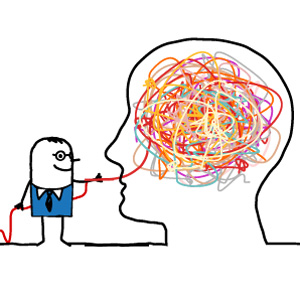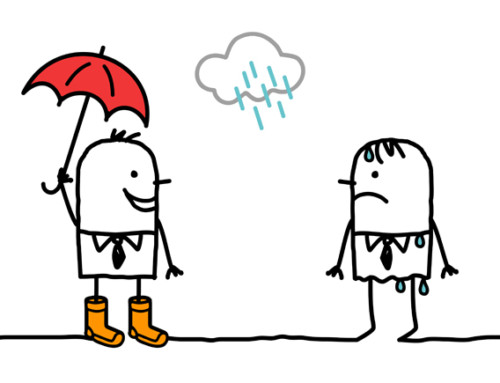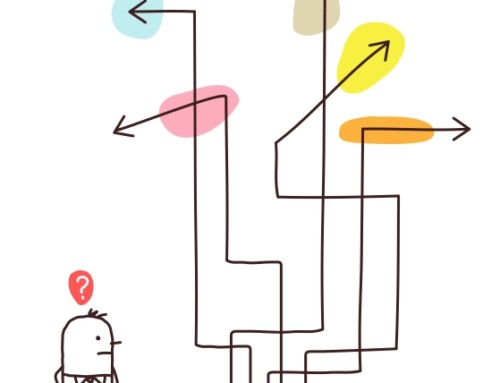In this article, I discuss several techniques to help you pinpoint the negative thoughts which are causing your emotional distress.
In my work as a Calgary psychologist and a Cochrane psychologist, I often have clients who can benefit from skills from cognitive behavioural therapy (CBT). One of the most beneficial CBT skills is a thought record. The use of thought records helps a person to feel better by catching, checking and changing ‘hot thoughts’.
Hot thoughts are negatively skewed beliefs which people have when they are experiencing strong and unpleasant moods like sadness, anxiety, anger, frustration, guilt, shame and embarrassment, among others. Thought records help a person feel better by first helping the person to identify or catch these hot thoughts. This is followed by checking the hot thoughts with evidence and ultimately changing them to more accurate balanced thoughts which lower the intensity of these strong moods.
A common challenge in doing thought records is to identify or catch the hot thought. In the following sections, I will provide ideas on how to do this so that you can then check and change your hot thoughts in order to feel better.
Use free association
The first step in identifying a good hot thought is to use free association. This was Dr. Sigmund Freud’s technique of asking his patients in psychoanalysis to say whatever came into their minds as a means of accessing material in their unconscious which was at the root of their issues. Once this material was brought into consciousness, Dr. Freud helped his patients to work through this material in order to feel better.
Free association to recall hot thoughts works in a similar manner and serves the same purpose. That is, write down whatever thoughts come into your mind as you try to recall what you you may have been thinking when you were experiencing strong emotions which were upsetting you in a particular situation.
Follow the principle of cognitive specificity
A second way to catch hot thoughts is to use the principle of cognitive specificity. This principle is that particular kinds of hot thoughts tend to cause us to experience particular emotions. For example, sadness or depression is often driven by negative thoughts about oneself, one’s current life and one’s future.
Anxiety and fear are driven by worries—typically about something bad you think will happen or about your being unable to cope with particular situations. Anger is driven by negative thoughts about another person’s character (e.g, “He’s selfish”) or about how another person feels about you (e.g., “She doesn’t care about me”). Frustration is driven by negative thoughts about being blocked from achieving a goal, (e.g.,”I’m not making any progress in my career” or “Nothing I try works in my relationship”). Guilt is driven by negative thoughts about having done something wrong (e.g., “It was my fault that our relationship ended”).
Use the principle of cognitive specificity to identify hot thoughts by first listing the particular emotions you were experiencing when you were upset. Then list the hot thoughts which correspond to those particular emotions using the above examples as your guide.

Look beyond situation-specific thoughts
Finding the hot thought which drives your distress the most often entails looking beyond the initial negative thoughts you recall from the situation. To ‘dig up’ these more general thoughts, you should ask questions of the situation-specific thoughts in the nature of, “If that thought is true, what does it mean?”
For example, if you were feeling depressed because you made a mistake at work, you might initially list a situation-specific thought driving your depressed mood like, “I made a mistake at work today.” Asking the question, “What does this mean about me?” might help you identify more general negative thoughts such as “I’m not a good worker” or “I’m incompetent”. These thoughts underlying the initial situation-specific thought you listed may be thoughts which are driving your depression the most. They therefore would be the best candidates for choice of a hot thought to check and change in order to alleviate your depressed mood.
Were you experiencing strong anxiety in the latter situation rather than depression, you could ask a different question of your situation-specific thought in order to dig up a hot thought driving your anxiety. In this case, you could ask the following question of the thought, “I made a mistake at work”: “If this is true, what am I afraid will happen?” This question may elicit a better hot thought driving your anxiety such as “I will get fired” or “My boss will make things hard for me” which you could check and change to reduce your anxiety.
This technique of asking questions about the meaning of situation-specific thoughts to uncover general hot thoughts can be used for additional moods like anger, frustration, embarrassment, guilt and shame.
The secret to benefitting from a thought record
I tell my clients that the secret to benefitting from a thought record is to choose a good hot thought. The tips in this article will help you to do this. If you need help in this process, you may benefit from working with a psychologist who specializes in CBT.
May you catch your hot thoughts so that you can check and change them,
Dr. Pat





Leave A Comment